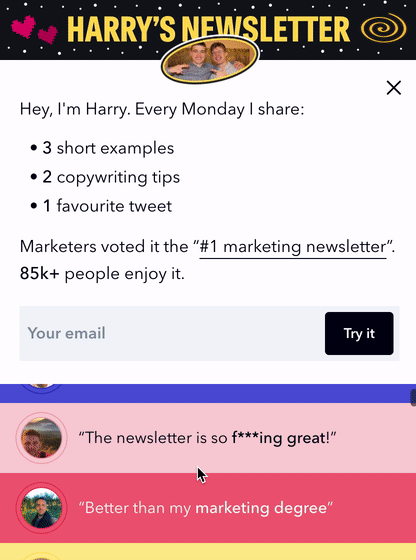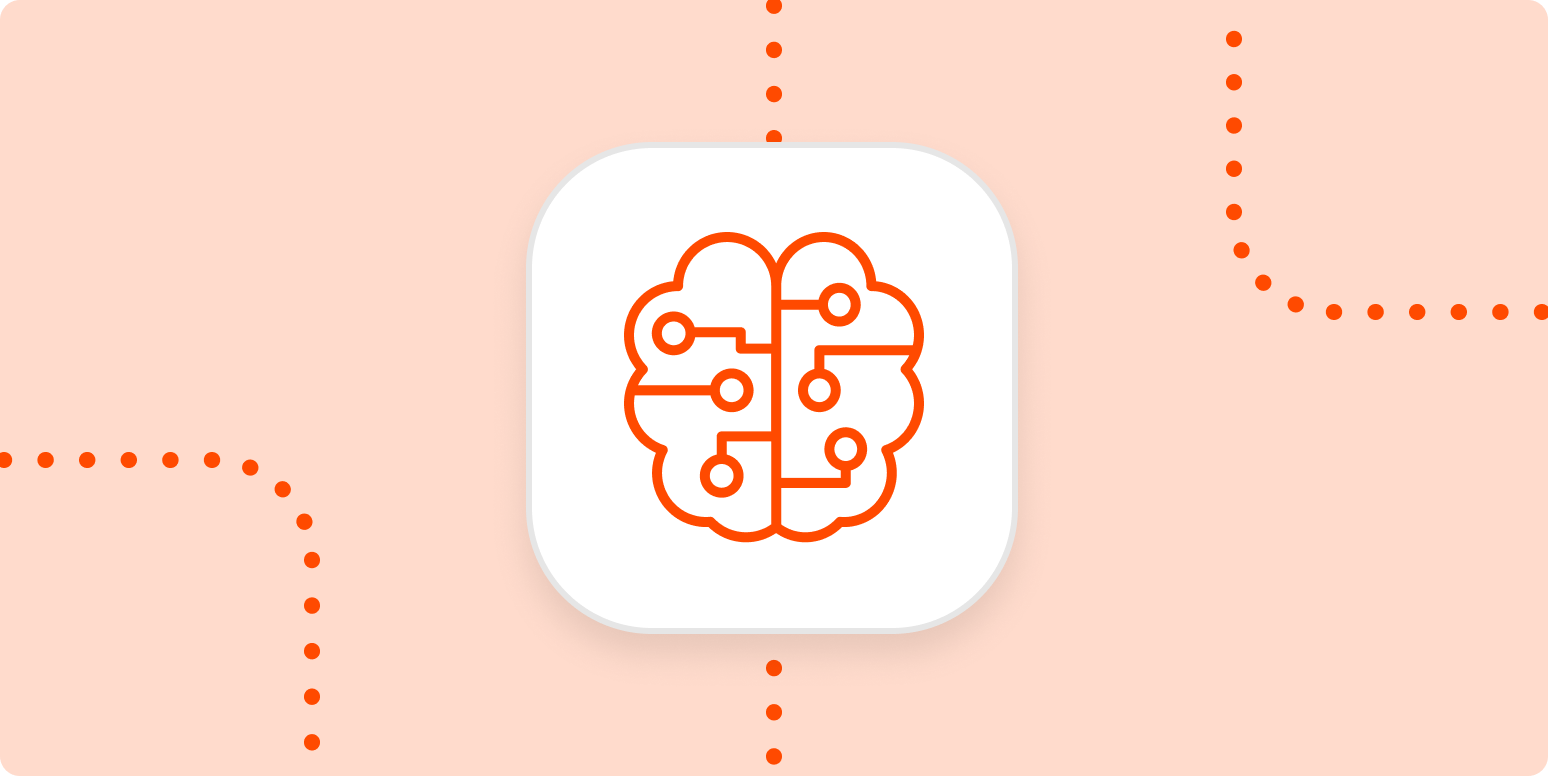Working in content marketing for the past five years has shown me there’s one thing customers want to know about your brand: why you?
Anchor bias—a cognitive bias that tricks us into valuing most whatever we learn first—answers that question for anyone who sees your marketing materials. And better yet, it makes sure your competition doesn’t even have a chance. Here’s how anchor bias can help you build your brand.
What is anchor bias? And how does it apply to marketing?
Our brains use anchor bias to figure out how the world works: it makes us prioritize the first signal we experience about a brand, product, book, person, city—the list goes on. When it comes to purchasing, signals can include:
-
Strategic copy on a brand’s landing page
-
Mentions in a news publication
-
Testimonials about a product
The list goes on. A signal plants a little seed in your prospects’ minds to use as a reference for a particular topic (in this case, your business). This reference changes how they view your business—and your competitors—down the line.
Grow your business with marketing automation
Did you hear that, marketers?
If your competitors plant the seed that their products are better than yours, you’re at a huge disadvantage. Your advertising has to be more than just showing how cool your products are: it has to dispel the anchor bias sprouting like a sequoia in your buyer’s mind.
With anchor bias, marketers can strategically showcase how their brand, products, and services are the best option. They can plant the seed and continue their marketing efforts to water it, so it sprouts into a long and healthy customer lifetime value.
Anchor bias example
Here’s an example of anchor bias within an experience you’re probably familiar with: job hunting.
The first thing you do is look for jobs online to figure out how much companies offer for your expertise. You find three open positions:
-
The first company is offering double the salary you were making at your old job (win!).
-
The second company is offering less than what your old position paid.
-
The third company is offering slightly more than what you previously made.
You start to think about how the second company must be low on cash or undervalue your type of role. The third company offering a bit more than you were already getting paid is ok, but why aren’t they willing to double your current salary like the first company?
As you keep looking for jobs, you have one thing in your mind: find more companies willing to pay you double your old salary. Anything less will feel like you’re settling.
It’s like a seed was planted in your mind, and it won’t stop sprouting: you deserve to double your salary, the company offering it is clearly the best one to work for, and that’s the application you care the most about.
3 examples of anchor bias in marketing
Anchor bias is human psychology, which means marketers can’t afford to ignore it. Lose out on the anchor bias of your buyers, and you’ll spend all your time and money digging yourself out of a hole. You don’t want to be the “we swear we’re better than them!” brand. You want to be the “you already know we’re better than them” brand.
Here are three ways companies have managed to take advantage of this cognitive bias.
1. Marketing copy creating anchor bias
Companies can use anchor bias to show that their products are the best option in the market by comparing themselves directly to the competition or strategically highlighting their winning features.
Everydae uses anchor bias in the above-the-fold marketing copy on their landing page.

Reading “Ace the SAT in just 10 minutes a day” makes it feel like any SAT help requiring more than 10 minutes of studying per day is asking for a lot. As prospects research other options, if they see an SAT study program that takes 20 minutes a day, they’ll think that’s a long time. If they hadn’t seen Everydae’s offer, 20 minutes might seem like a great option.
Now Everydae is the service to beat. (Anyone want to try for 5 minutes?)
Apply this strategy
What’s your leads’ number one pain point? Show them how your brand solves this problem in the fastest, easiest way. This doesn’t mean that if you write “Best” in your copy, you’ve created an anchor bias: vague terms won’t create anchor bias.
Find specific features and benefits about your product or service that mean a lot to your customers. If you’re not sure which to focus on, run customer surveys to see what sold your previous customers on your brand over the competition.
Some examples:
-
Use copy that reveals how much faster your product is in comparison to the competition.
-
Showcase specific, quantitative information about your product or service.
-
Tell a memorable story with your brand as the guiding light for the hero (your customer persona).
-
Compare the difference in features or pricing to your competitors.
This kind of copy should be in all your first touchpoints across channels. Then, keep reminding buyers of this *amazing feature* as they continue through your funnel.
2. Social proof establishing anchor bias
What happens if your product or service is really similar to the competition? Companies in competitive markets can use social proof to create anchor bias. In this case, anchor bias tells leads that everybody else is using your brand. It’s a little bit of FOMO.
This is exactly what The Marketing Examples does. With hundreds (if not thousands) of marketing newsletters on the market, how could they stand out? By showing the proof of their happy customers.
When given the option to subscribe to The Marketing Examples newsletter, marketers see 25 testimonials from happy subscribers. With that many excited readers, The Marketing Examples creates an anchor bias that this newsletter is really good. Any other newsletter that doesn’t show this many rave reviews will appear to not have the same kind of fan base.

Apply this strategy
What social proof can you show across your funnel? Show how many customers use your platform, highlight the number of 5-star reviews, and put customer testimonials on your product pages to create an anchor bias that your brand is the most trustworthy.
Here are a few ways to create anchor bias with social proof:
-
Ask customers to leave reviews, so future customers see that you’re established and reputable.
-
Place your most well-known customers in your top-of-funnel marketing materials.
-
Add positive social media posts about your brand to your landing pages.
The more people see how others love and enjoy your brand, the deeper the anchor bias gets buried. Spread social proof across the entirety of your funnel, sharing testimonials about specific products or features as your leads show interest in them.
3. Niche marketing inspiring anchor bias
You don’t need to be the biggest company in your industry to create anchor bias. Anchor bias gets planted every time somebody sees a product and thinks, “That would be really great for my [insert problem here].“
Ali Abdaal niched down his productivity planner strategically. Instead of making another productivity planner and trying to show people why this one is better than the rest, he made this planner for a specific person. Called the Part-Time Productivity Planner, Ali designed it without dates or deadlines. It’s for the person working on their side hustle that wants to stay accountable but can only focus on it part-time.

Anyone building a side hustle will see this planner and think, “That would be great for my side hustle!” And when they look at other planners, they’ll feel like the strict dates and deadlines don’t fit their needs. This one is about part-time productivity, and anchor bias tells them it’s the best available option.
Apply this strategy
How can you niche down your brand and products? Be specific about who you’re selling to, so buyers can see you’re the platform for plant lovers, website developers, or notebook enthusiasts. Talk to these specific people throughout your entire funnel, from the first touchpoint through your checkout and upsell pages.
You can build anchor bias while marketing to your niche by:
-
Calling out a specific user persona on your landing page, product pages, and top-of-funnel content
-
Specifying how your products solve their problems specifically (and aren’t generalized for a bunch of varying problems)
-
Adding niche-based copy throughout your funnel
Niching creates anchor bias by making your products the stand-out winner among a crowd of products for a wider market. Another company with a similar product doesn’t feel like they know you as well as the one that used niche-based copy.
Bringing anchor bias to the wild
Anchor bias helps our brains categorize incoming information and remember how the world works. We use it to remember that a latte in Los Angeles should cost about $8 (no, I’m not kidding), and a cup of Folgers should only be a few cents. It’s the bias seeing a signal and deciding if:
-
We’re happy with the result (yes, I’ll pay $8 for the latte because my anchor bias tells me that’s how much it costs in Los Angeles).
-
We refuse to hand over the cash (I’m not paying $8 for one cup of Folgers because my anchor bias signals this is a rip-off).
It’s a part of our psychology—and an important part of the buying process.
[adsanity_group align=’alignnone’ num_ads=1 num_columns=1 group_ids=’15192′]
Need Any Technology Assistance? Call Pursho @ 0731-6725516







